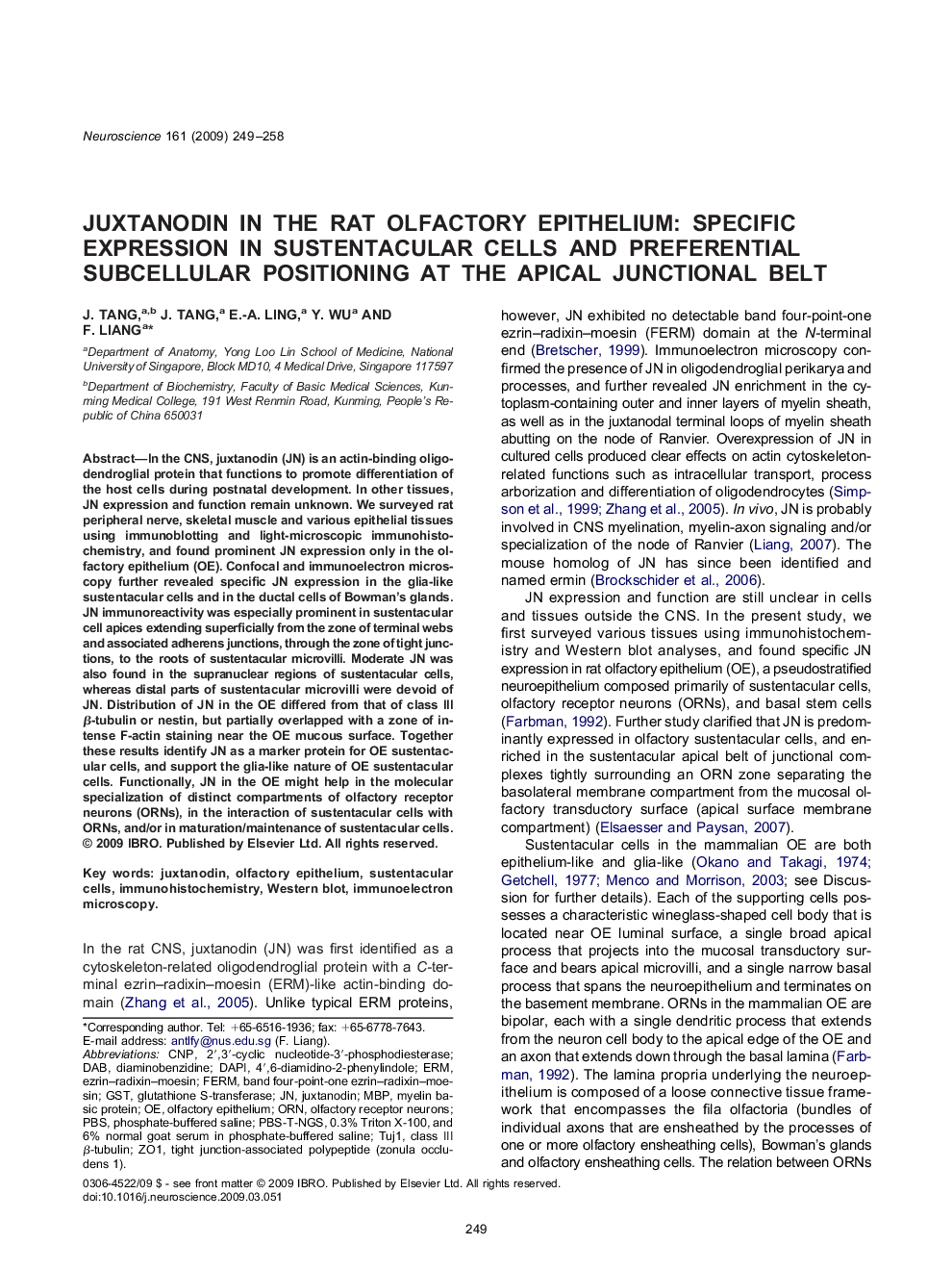| Article ID | Journal | Published Year | Pages | File Type |
|---|---|---|---|---|
| 4339917 | Neuroscience | 2009 | 10 Pages |
In the CNS, juxtanodin (JN) is an actin-binding oligodendroglial protein that functions to promote differentiation of the host cells during postnatal development. In other tissues, JN expression and function remain unknown. We surveyed rat peripheral nerve, skeletal muscle and various epithelial tissues using immunoblotting and light-microscopic immunohistochemistry, and found prominent JN expression only in the olfactory epithelium (OE). Confocal and immunoelectron microscopy further revealed specific JN expression in the glia-like sustentacular cells and in the ductal cells of Bowman's glands. JN immunoreactivity was especially prominent in sustentacular cell apices extending superficially from the zone of terminal webs and associated adherens junctions, through the zone of tight junctions, to the roots of sustentacular microvilli. Moderate JN was also found in the supranuclear regions of sustentacular cells, whereas distal parts of sustentacular microvilli were devoid of JN. Distribution of JN in the OE differed from that of class III β-tubulin or nestin, but partially overlapped with a zone of intense F-actin staining near the OE mucous surface. Together these results identify JN as a marker protein for OE sustentacular cells, and support the glia-like nature of OE sustentacular cells. Functionally, JN in the OE might help in the molecular specialization of distinct compartments of olfactory receptor neurons (ORNs), in the interaction of sustentacular cells with ORNs, and/or in maturation/maintenance of sustentacular cells.
